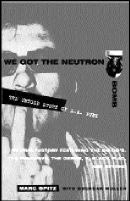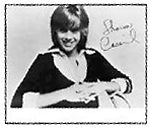I am an inveterate journal keeper. Partially, it’s because it helps me organize thoughts and emotions, but mostly it’s because I am an unapologetic egomaniac. Since my sophomore year of high school, I have held steadfast in my belief that someday, every episode from my pathetic personal life—each bout of drunken karaoke with B-list rock stars and every anti- climactic sexual tryst—will weave itself into a narrative that provides the telling backdrop to my influential career. Ha.
Of course, I have no intention of writing that epic myself. Perhaps in my twilight years I’ll pen a self-indulgent autobiographical doodad for drug money, but the task of recounting my life in all its compelling minutiae will ultimately fall to another. Control freak that I am, many years ago I half-jokingly designated a childhood friend as that biographer, promising him posthumous access to not just my journals but years of correspondence, photo albums, and mix tapes, too.
Upon learning of this, my mother announced that if that was the case, she had every intention of penning her own memoir—something like Setting the Story Straight or My Son, That Liar—drawn from our family’s storehouse of artifacts and anecdotes. Although initially amused by this prospect, wondering how Mom would whitewash topics like my homosexuality and boozing, upon further consideration I blanched. Her version of events would strike a severe blow to my calculated mythology. I want the world to know my face from photos of me snuggling with Robbie Williams, not pulling on my tights for the Renaissance Faire.
Ultimately, the contents of my journals, wherein I have always done my damnedest to avoid fictionalizing events (elsewhere, I habitually embellish stories to garner bigger laughs or impress people), will be the proof that makes the pudding. The stories collected there will probably make my life as I have led my “official” biographer to view it seem somewhat bland in comparison, while Mom will pass out cold when she finds out what really happened on Halloween night 1983.
Such is the nature of documenting history. Everyone’s version of events differs. The Truth is arrived at through the painstaking collection of as much data as possible and distilling it into a narrative that more or less nails down events as they occurred. But human beings are notoriously fallible—and that’s what can make re- examining the past truly exciting. The best works of history are those that conjure up not only dates and events but the cultural zeitgeist and dissenting opinions as well.
I have been pondering this a lot while reading two new books, We Got the Neutron Bomb: The Untold Story of L.A. Punk (Three Rivers Press) and Dance of Days: Two Decades of Punk in the Nation’s Capital (Soft Skull Press). The former, written by SPIN scribe Mark Spitz and Brendan Mullen, founder of key punk venue the Masque, is an oral history of the Los Angeles underground music scene, reaching back to the Doors in the late ’60s and concluding with Pat Smear from the Germs being recruited by Nirvana in 1993. Incorporating testimonies from over 150 participants, it recounts in rapid-fire prose the rise of seminal artists, including the Runaways, X, and Black Flag, as well as key influences that slipped under the radar, like Seattle expats the Screamers. The juxtaposition of anecdotes frequently illuminates jarring discrepancies, particularly concerning the sordid rise of the Go-Go’s.
Dance of Days takes a different tack. Though their cast of characters is almost as sprawling, authors Mark Anderson (co-founder of the punk activist collective Positive Force) and D.C. music journalist Mark Jenkins consistently keep the emphasis on the evolution of the overall scene—starting with forefathers the Slickee Boys in the late ’70s and wrapping up with Riot Grrrl—rather than individuals. The erratic exploits of the oft underrated Bad Brains aside, the bulk of the reporting takes on a rather sober tone. Yes, many of the main players in the harDCore movement of the early ’80s eschewed sex and drugs in pursuit of placing sole emphasis on rock and roll, but the resulting excitement often gets diluted in the translation here.
Both books are extremely well researched and, when taken together, offer a thought-provoking comparison study; both scenes, for example, went from being composed largely of vibrant female participants to becoming increasingly male-dominated as younger suburban boys brought machismo and violence into the mix. But ultimately Neutron Bomb proves the more compelling read, because its prose comes at the reader the way I remember experiencing punk rock: fast and colorful, scary and exhilarating. Dance of Days is over 100 pages longer and earnest almost to a fault. I found myself setting it aside with sentiments I’m sure the future ward of my treasured journals will echo: “Good story, but it needed a better editor.”






